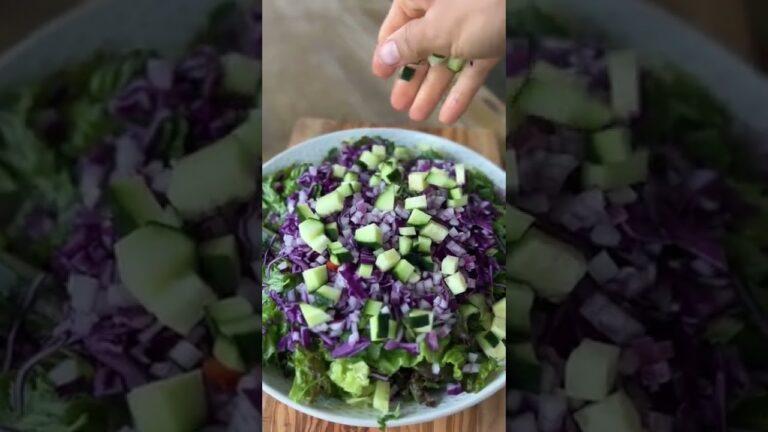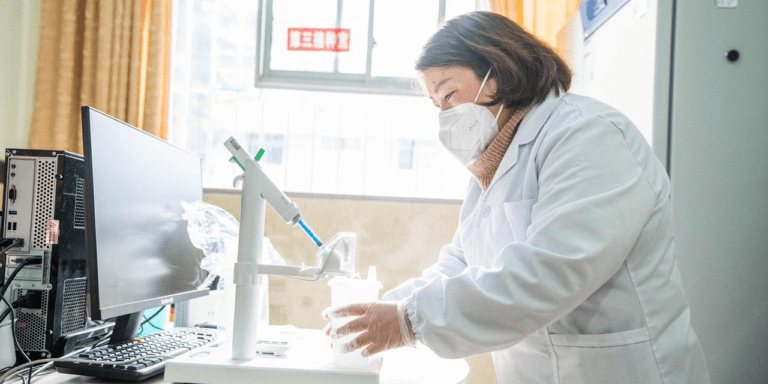Sunscreens contain more chemicals every year—and the more ingredients in the sunscreen bottle, the more potential problems for your health. According to the Environmental Working Group (EWG), which has studied sunscreens extensively, many of the dangerous chemicals in these products have been shown to stay in the body, where they can cause cancer and alter hormone regulation, among other harms.
It’s common knowledge that when one chemical is mixed with another, the mixture creates yet another chemical. In addition, researchers are finding that when some sunscreen chemicals sit in the bottle, they react with the bottle itself. The longer they sit in the bottle, from one summer to the next, the more potential risk you could experience.
ACTIVE AND INACTIVE
Sunscreens contain active and inactive ingredients, and both can be harmful. Damaging effects from sunscreens’ active ingredients include skin allergies, disruption of hormones and negative impacts on reproduction, including low sperm count in men.¹ For example, three active sunscreen ingredients used as UV (ultraviolet) filters—homosalate, avobenzone and oxybenzone—disrupt the endocrine system, meaning they slow down or disrupt the function of the thyroid, the adrenals and the gonads. The endocrine system controls your weight and many other bodily functions, while the adrenals mainly control your energy levels and your gonads produce sperm (if you’re male) or ova (if you’re female). This means sunscreen use could cause you to gain weight, have no desire to achieve (because you’re too tired) and stop you from having children.
The chemical structure of inactive ingredients—which make up anywhere from half to 70 percent of the product—lend sunscreens properties such as color as well as making them smooth and shelf-stable. Discussing the inactive ingredient retinyl palmitate—a synthetic form of vitamin A found in many cosmetic products—the EWG notes that although government studies indicate that “[o]n sun-exposed skin, retinyl palmitate may speed development of skin tumors and lesions,” the Food and Drug Administration (FDA) “has yet to rule on the safety of retinyl palmitate in skin care products.”²
Studies have shown that sunscreen ingredients penetrate through the skin and can be found in breast milk and urine; they are absorbed into the bloodstream as well.¹ In a study published in 2019 in the Journal of the American Medical Association (JAMA), researchers assessed the “effect of sunscreen application under maximal use conditions,” with surprising results.³ The researchers assigned study participants to use one of four sunscreens—including two sprays, one lotion and one cream—and had them apply the product to 75 percent of the body every two hours, totaling four times a day for four days. After just one day, participants in all four groups showed “plasma concentrations that exceeded the threshold established by the FDA for potentially waiving some nonclinical toxicology studies for sunscreens.” Measuring blood concentrations of four ingredients (avobenzone, oxybenzone, octocrylene and ecamsule), the investigators’ understated conclusion was that the “systemic absorption of sunscreen ingredients supports the need for further studies to determine the clinical significance of these findings.”
Commenting on the JAMA study’s publication, the FDA prevaricated, “[T]he fact that an ingredient is absorbed through the skin and into the body does not mean that the ingredient is unsafe. . . . Rather, this finding calls for further industry testing to determine the safety and effect of systemic exposure of sunscreen ingredients, especially with chronic use.”4
As already noted, avobenzone and oxybenzone have the potential to make you fat, tired and sterile. As for octocrylene, researchers from France’s Sorbonne University published a study in 2021 in Chemical Research in Toxicology that reported how octocrylene degrades within the bottle into another compound called benzophenone, which is a known carcinogen, mutagen and endocrine disruptor.5 The researchers also discovered that the concentration of benzophenone in such products increased rapidly as the product aged.
A Sorbonne University press release noted that the U.S. has banned benzophenone in food products and packaging, listing it as a carcinogen and developmental disruptor. Summing up benzophenone’s hazards, the researchers pointed out that:
PROTECTION WITHOUT SUNSCREEN
Traditional groups never did and still don’t use sunscreen, which raises the question of whether public health officials have exaggerated concerns about the sun. Sunscreens aside, there are two optimal ways to avoid sun damage: strategic sun exposure and a nutrient-dense diet.
In the first instance, exposing yourself to the sun in increasing amounts daily brings melanin to the skin’s surface. Melanin—found inside cells, in layers in the cell wall and outside cells—is the browning pigment in the skin that blocks sun damage. People with darker skin have more melanin than those who are pale. As the sun gets stronger and stronger in the spring months, building up outside time during the day, a little at a time, will bring melanin to the surface of the skin naturally and offer protection from sunburn.
Melanins are not unique to human beings. As described by authors writing in Cellular Microbiology, “Melanins are enigmatic pigments that are produced by a wide variety of microorganisms including several species of pathogenic bacteria, fungi and helminthes.”7 They note that it is difficult to study melanin because the pigments “defy complete biochemical and structural analysis.” Interestingly, melanin production is linked to “protection against environmental insults,” while “[i]nterference with melanization is a potential strategy for antimicrobial drug and pesticide development.”7
POWERFUL FOODS
Building up your exposure to the sun is best when combined with the second method of sunburn prevention: consuming a nutrient-dense diet loaded with beta-carotene-filled foods. In a double-blind, placebo-controlled study published in Experimental Dermatology in 1995, researchers reported that beta-carotene, “a quencher of excited species such as singlet oxygen and free radicals,” protects against “cutaneous photodamage, including sunburn acutely and photocarcinogenesis chronically.”8 Moreover, they found, nothing is better than food, with data suggesting “that oral beta-carotene supplementation is unlikely to modify the severity of cutaneous photodamage.”
Foods highest in beta-carotene include orange vegetables such as carrots, butternut squash and pumpkin, as well as red peppers. Absorption of beta-carotene and its bioconversion into vitamin A improves substantially when co-consumed with animal-source, vitamin-A-rich foods like pastured butter and pastured egg yolks.9,10
In addition to exposing themselves to the sun in gradual increments (as tolerated without burning), some people who are prepping for sun exposure will go so far as to juice carrots and drink several pints a day, while eating eight to twelve raw pastured yolks a day (prepared “over-easy” or in the form of Russian custard11). According to Max Gerson, carrot juice is the only juice that has a shelf life; after juicing, it can sit in the refrigerator for up to two days. (Other vegetable juices need to be consumed within twenty to thirty minutes of juicing.)
Tomato-based foods such as tomato paste can also be beneficial, with the tomato’s red carotenoid pigment, lycopene, serving a similar sun-protective purpose. In one study, individuals who consumed tomato paste (equivalent to sixteen milligrams of lycopene per day) and olive oil for ten weeks experienced increased serum levels of lycopene and total carotenoids in the skin, displaying significantly less skin redness (erythema) compared to a control group that consumed olive oil only.12 T he r esearchers concluded, “protection against UV light-induced erythema can be achieved by ingestion of a commonly consumed dietary source of lycopene.”13
TAKE IT EASY
Children with gut dysbiosis often are underweight and exhibit signs of “failure to thrive” (FTT).14 Such children will need much more building up; the more dysbiosis, the longer this process will take. You cannot give a pale, underweight FTT child a quarter cup of carrot juice for four days and then take her to a sunny beach for eight hours of sun exposure—she will burn. Again, gradual sun exposure and building up with beta-carotene- and vitamin A-rich foods will be necessary.
Likewise, someone living in the north who has spent the winter indoors without being exposed gently to the sun day by day will not fare well if they go to southern Florida for a sunny vacation and spend the first day on a fishing boat for eight hours, with the bright sun reflecting off the water.
This can pose a predicament because no one wants to spend a five-day vacation mostly indoors, gradually building up melanin by getting five minutes of sun exposure the first day, ten minutes the second day, fifteen the next, and so on.
In cases like this, vacationers will want to supplement dietary preparation with protective items such as a wide-brimmed hat and sun shirt, good sunglasses, time in the shade and possibly some homemade sunscreen. Doing one’s best to avoid the peak hours between 10:00 a.m. and 2:00 p.m. is also recommended.
DIY SUNSCREENS
Making your own sunscreen is a heathier option, and some people may even have the ingredients for a homemade version on their shelf already. When making homemade sunscreen, different options will result in different sun protection factors (SPFs). A 2010 study by researchers in India tested the SPFs of various edible and essential oils. The researchers found, “Oily vehicles are more effective for producing a uniform and long-lasting film of sunscreen on the skin, and their emollient properties protect the skin against the drying effects of exposure to wind and sun.”15 Interestingly, this study has been censored from simple online searches and can be found only by searching archived websites—the kind of search done by a computer programmer. Even specifically looking for the exact search words finds nothing; linking to a previous written article that linked the Indian study also generates a 404 “page not found” error. This is disgraceful. Is homemade sunscreen such a threat that the information needs to be hidden from the general public?
In their 2010 study, the Indian researchers identified the sun protection factor (SPF) associated with various edible and essential oils as follows:
Coconut oil was at the top of the Indian researchers’ list with an SPF of 8; the Mayo Clinic asserts that coconut oil can block “an estimated 20 percent of the sun’s rays.”16
In Oil of Nature, a now out-of-print book published in 2008 (used copies sell for over one hundred dollars), author Anthony O’Lenick listed the SPFs of carrot seed oil and red raspberry oil as much higher: between 28 and 50 for raspberry seed essential oil and between 38 and 40 for carrot seed essential oil.17,18 (O’Lenick served as the president of silicone company Siltech, holds over two hundred sixty patents and is a fellow in the Society of Cosmetic Chemists.) Some fair-skinned people report raspberry seed oil to have an effect after a day in the sun equivalent to using an SPF 15 sunscreen.
Nigella seed oil is another oil that offers protection, according to North African and Belgian researchers, “against UV radiations with relatively high shielding power (SPF) and protection factor (PFA) scores.”19 These researchers note that the “optical transmission of Nigella seed oil, especially in the UV range. . . [is] comparable to those of date seed oil, raspberry seed oil and titanium dioxide preparations, which can be used as sun protection factors for UV-B (SPF) and protection factors for UV-A (PFA).” Note that while many commercial sunscreens use titanium dioxide, it is a heavy metal and is not recommended for use near or on the body.
Many individuals who make homemade sunscreens are comfortable using zinc oxide powder, which has a reported SPF of 11 to 12. (Zinc oxide is not the same as the zinc found in your food!) The FDA has approved zinc oxide, classified as a broad-spectrum UVA and UVB reflector, for use as a sunscreen because zinc oxide does not absorb into the skin when applied as a lotion. It sits on top of the skin, leaving the skin white in that area. The EWG describes zinc oxide as a top choice for sun protection, describing it as stable in sunlight and arguing that it “offers good broad-spectrum protection.”20
However, zinc oxide is not recommended for those who prefer a natural, chemical-free approach, as it is a strongly charged particle attracted to itself; it also doesn’t mix well or suspend into homemade recipes. Moreover, zinc oxide and aluminum oxide are both byproducts from the fumes that result when certain metals are heated. Zinc oxide is also used for making rubber, plastic, ceramics, glass, cement and lubricants, and it has semiconductor properties.21 Other oils that rank higher in SPF are safer.
DON’T DRUG YOUR SKIN
Manufactured sunscreens are harmful. Some, like the EWG, would say that only some of the ingredients are problematic, while others argue that all sunscreens and all sunscreen ingredients are to be avoided.22
Legally, sunscreen is classified as a drug, with the FDA requiring companies to conduct necessary testing to gain approval to use specific sunscreen chemicals. Even so, the regulatory process has not prevented many carcinogenic, endocrine-disrupting and fertility-threatening chemicals from making it into products used by people of all ages, often on a lifelong basis. Eating a Wise Traditions diet, building up your sun exposure gradually, wearing protective clothing and making your own sunscreen when needed are much better options.
DO-IT-YOURSELF SUNSCREEN
Making your own sunscreen is simple and quick. Be sure to blend the mixture properly, however; uneven coverage can result in burn spots. Additionally, remember that oil put too heavily around the eyes will drip into the eyes when you go out into the sun and start sweating. If too much oil is applied, you will not be able to count on goggles and snorkels to create a proper seal. A very small amount makes a better seal (picture a rubber ring on a mason jar). It takes about thirty minutes for oils to be fully absorbed by the skin, so it’s best to apply your homemade sunscreen thirty minutes before going outside. Applying oils to the skin when you are already out in the sun sweating, or are wet from the water, can prevent absorption.
Standard recipes usually include one-quarter cup of a carrier oil (such as olive oil) and fifteen to twenty drops of your desired essential oil. Note that homemade sunscreens kept in a beach bag in the hot sun may turn to liquid, depending on how much beeswax you’ve added to the recipe. If you prefer to omit beeswax or shea butter from the recipe, you can spray your sunscreen on the skin, but be sure to shake the mixture first and ensure complete coverage when applying. Spray versions can easily miss a spot.
1/4 cup olive oil
1/2 cup coconut oil
2 tablespoons shea butter (optional)
3 ounces beeswax (optional)
1 teaspoon carrot seed oil (SPF 38-40)
1 teaspoon red raspberry seed oil (SPF 28-50)
2 teaspoons peppermint essential oil (SPF 7)
1 teaspoon lavender essential oil (SPF 6)
Many different oils can be used; the ratio depends on how high an SPF you desire. Those needing a higher SPF can use the high-SPF oils in larger quantities. Note, however, that citrus oils like grapefruit, lemon, orange and lime are considered phototoxic. This means you will get sunburned when using them, as they amplify the sun. Some classify essential oils from lemongrass, cumin, fennel, anise and verbena absolute as “lightly photosensitizing,” but the choice is yours.23 Lemongrass, in any case, comes from a grass (not citrus fruit) and is not phototoxic.
REFERENCES
This content was originally published here.





















